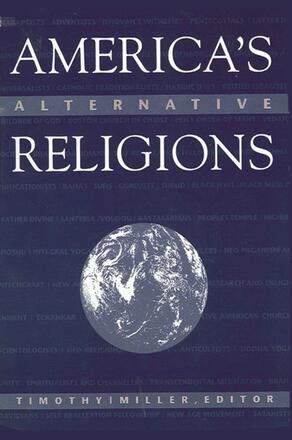
America's Alternative Religions
Alternative formats available from:
This is a source of reliable information on the most important new and alternative religions covering history, theology, impact on the culture, and current status. It includes a chapter on the Branch Davidians.
Description
This is a single-volume source of reliable information on the most important alternative religions, covering for each such essentials as history, theology, impact on the culture, and current status. The chapters of the book were written by experts who study the movements they have written about.
Timothy Miller is Associate Professor of Religious Studies at the University of Kansas.
Reviews
"Given the sometimes inflammatory rhetoric and less than objective stance of many of the books published about what are often called 'cults,' Miller's collection provides a sorely needed balance and a dispassionate source of information about these groups. The book provides a broad and deep coverage of the topic. The appended bibliographies guide the reader to further sources of reliable information. The concluding essay by Shupe and Bromley on the 'Evolution of Modern-American Anticult Ideology' explores and interprets the reaction that these alternative religious groups have engendered. Indeed, many of the so-called anti-cult groups have made it their business to publish books about these groups that are often less than accurate and filled with attempts at a 'theological' debunking of them. This book serves as a voice of sanity and of tolerance in what has often been an overcharged and less than rational environment of debate. Miller's book enters into the fray of this cult and anti-cult debate where it will be welcomed by those who have often been pained at the misinformation and provocation that has been all too common in this arena.
"We are still at a very primitive stage of mistrust and of (what one of the authors calls) the 'satanizing' of whatever religious or spiritual groups do not fit into the culture's prevalent categories. Persecution follows on the heels of ignorance and mistrust. This book goes a long way toward helping to dispel ignorance about these alternative religions. " — Paul Muller-Ortega, Michigan State University
"America's Alternative Religions fills a real need in the literature of non-mainline religions, religions that have typically been marginalized and misunderstood by outsiders. The burning of the Branch Davidian's Mount Carmel center in Waco—the death of so many innocents—shows the extreme tragedy that may result from such misunderstanding. No other book provides such a useful consideration of so many smaller groups in America's diverse religious landscape. At the same time, this book clearly shows how yesterday's 'cults'—persecuted and scorned by society—become today's acceptable members of America's long-standing religious pluralism. A serious reading of this book will go far to reveal the scare tactics and reductionistic thinking so effectively promulgated through sensationalist media presentations and by organizations like the Cult Awareness Network. America's greatness is revealed in its diversity and through its ability to accommodate alternatives to consensus reality.
America's Alternative Religions reveals this long-standing diversity and accommodation. There are other books that survey the same topic, but none that I know of combine the same mix of breadth and depth. " — Jeffrey Timm, Wheaton College